Classical Music CDs Round-Up 8 | reviews, news & interviews
Classical Music CDs Round-Up 8
Classical Music CDs Round-Up 8
From sackbutts and serialism: this month's releases sifted and sorted
This month the selection varies from sackbutts to serialism, by way of condensed Wagner, Elgar conducted by the much-missed Vernon Handley and music from both Shostakovich and a disciple of his. Among contemporary music there is Osvaldo Golijov’s lively setting of the Passion story and the young German composer Thomas Larcher and the great Henri Dutilleux. There are also more delights from Swiss master Frank Martin. Violin pyrotechnics are supplied by Ysaÿe. But we begin with vintage Gershwin, and that famous looping clarinet.
FEELGOOD CD of the MONTH
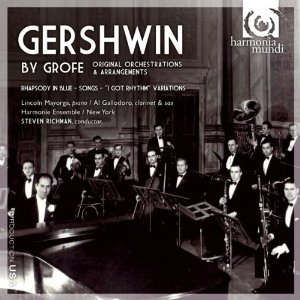 Gershwin by Grofé: Symphonic Jazz
Gershwin by Grofé: Symphonic Jazz
Harmonie Ensemble New York/Steven Richman, with Lincoln Mayorga (piano) and Al Gallodoro (saxophone and clarinet) (Harmonia Mundi)
Skip to the end - Rhapsody in Blue - and you’re assailed by a clarinet solo of such oomph and panache, the klezmer-like wailings sounding like a ghost from the past. It’s startling, brilliant, and brings tears to the eyes. And then you read the sleeve notes and find out that the soloist Al Gallodoro was a member of the Paul Whiteman band in 1930s New York, the same ensemble which premiered the work in 1924. Sadly Gallodoro died two years after recording this account of the Rhapsody, aged 95. The piece is more often heard in the rather bloated full orchestral version orchestrated by Ferde Grofé, but here we get his original jazz band version. Leaner, meaner and tighter-sounding, it packs an effervescent punch here, helped by a close-up recording balance and some idiomatic banjo-twanging. There are so many moments where you want to jump up and cheer, my favourite being the lower brass chord change accompanying the violin solo after the big tune in the middle. This disc would be worth buying for the Rhapsody alone, but we also get original Paul Whiteman Orchestra versions of Gershwin standards, and the composer’s own orchestration of the quirky, underrated “I Got Rhythm” Variations. Playing and direction are faultless, with marvellous piano playing from Lincoln Mayorga. As a novelty bonus, one track is duplicated, recorded on a 1909 Edison wax cylinder. Find on Amazon
Al Gallador and Lincoln Mayorga on YouTube
CD of the MONTH
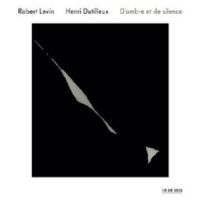 Dutilleux: D’ombre et de silence
Dutilleux: D’ombre et de silence
Robert Levin (piano), with Ya-Fei Chuang (second piano) (ECM)
Along with Messaien and Boulez, Henri Dutilleux is one of the three most significant French post-war composers Born in 1916, he is still writing in his 90s. Boulez expressing his disdain for Dutilleux’s 1950 Symphony No 1 by petulantly turning his back on the composer. Dutilleux’s music is incredibly sophisticated and shows an amazing sensitivity for colour and line. It’s "modern", yes, but anyone who responds to 20th-century French piano music will find things to enjoy.
Robert Levin’s rewarding selection of piano music was recorded in 2008 under the composer’s supervision and is blessed with a typically natural-sounding ECM recording. Intensely self-critical, Dutilleux destroyed all his works before the 1946 Sonata, which he declared as his true Opus 1. It’s all so, so Gallic-sounding, and you imagine that this is how Poulenc could have sounded had he followed a more radical path. There are nods to Ravel and Debussy and some over-ripe harmonies which would have pleased Messiaen. Even when Dutilleux’s idiom is more adventurous, as with the percussive chords which open Résonances, there’s always something to tickle the ears; the progressions feel so right and inevitable. Or try the Petit air à dormer debout which opens this disc – spare and elegant, with not a superfluous note. Dutilleux and Robert Levin clashed amicably about whether to include several charming early works on this disc, and a compromise was reached whereby they appear after a pause at the end of the recital. Find on Amazon
OTHER RELEASES
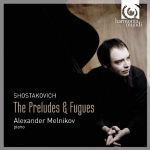 Shostakovich: The 24 Preludes and Fugues
Shostakovich: The 24 Preludes and FuguesAlexander Melnikov (piano) (Harmonia Mundi Classique, 2CDs)
The Opus 87 Preludes and Fugues for solo piano were written in 1950-51 as a homage to Bach for the pianist Tatyana Nikolaieva during a particularly bleak period in the composer’s life. Officially denounced in the late 1940s, Shostakovich began to retreat into himself, churning out several uninspiring propaganda pieces whilst expressing his true voice in works such as this. Most pianists now record and perform the work as a cycle, and as with Bach’s two sets of preludes and fugues in every key, the journey is long, gripping and fascinating. It’s the restraint and staggering technique of the music that hit you; the unnerving simplicity of the first prelude and fugue in a radiant diatonic C major a deceptively gentle introduction. Miracles are achieved with the most unlikely of fugue subjects, creating passages of staggering virtuosity and excitement, such as the dissonant fugue in D flat. There are also several moments of incredible purity and radiance; the seventh fugue in A is miraculous, with simple arpeggio formations transformed into pealing bells. As the work progresses, you’re aware of a subtle darkening, of a growing tension, and by the time the closing bars of the mighty final fugue in D minor ring out there’s a real feeling of cathartic release. Wonderful, humane playing from the young Russian pianist Alexander Melnikov; I particularly liked his ability to balance the differing facets of these fascinating pieces. There’s wit, pastoral calm, devilish energy and anger, all eloquently expressed. There’s also a bonus DVD. Find on Amazon
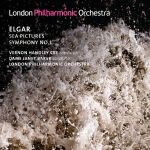 Elgar: Sea Pictures, Symphony No 1
Elgar: Sea Pictures, Symphony No 1
London Philharmonic Orchestra/Handley, with Janet Baker (mezzo soprano) (LPO)
Elgar's First Symphony of 1908 is a great late romantic work, seething with melancholy passion and so much more than a string of smug, complacent Edwardian big tunes. There’s a mood of angry uncertainty at the heart of the first movement which is barely resolved at the close of the finale; only the lovely slow movement offers balm. Vernon Handley made a very good studio recording with the London Philharmonic in the late 1970s, in better sound and with more secure orchestral playing. So why choose this version on the LPO’s own label, in a decent but less than perfect recording originally made by Capital Radio in days when they occasionally broadcast classical music? It’s all to do with the atmosphere. This concert was given in February 1984 to mark the 50th anniversary of Elgar’s death, and it’s all more exciting, volatile and emotionally involving. The coupling is Janet Baker’s performance of the five Sea Pictures; her voice still in fantastic shape 19 years after famously recording the cycle with Sir John Barbirolli, though not even her artistry can save us from the final song’s turgid text. Find on Amazon
 Osvaldo Golijov: La Pasión segun San Marcos
Osvaldo Golijov: La Pasión segun San Marcos
Orquesta la Pasión and members of the Simon Bolivar Youth Orchestra of Venezuela/Guinand, with Biella da Costa and Jessica Rivera (Deutsche Grammophon)
Commissioned by the International Bach Academy in 2000, the Argentinian Golijov was one of three composers asked to write modern versions of the crucifixion story, translating the spirit of Bach, if not the idiom, to modern times. Instead of the chorale melodies which would have been familiar to Bach’s audiences, we get tangos, sambas and bits of flamenco, mostly sung in colloquial Spanish. Golijov’s ¿Por Qué? is about as far away from Bach as you can get; at moments like this it’s the Passion according to Tito Puente, and sung by Celia Cruz. This mingling of sacred and profane has been attempted before, notably in Leonard Bernstein’s Mass. Many of the individual numbers are stunning - Judas’s solo in El Primer Día is marvellous - but then things suddenly go all Buena Vista Social Club. But as the story unfolds, Golijov’s restless percussion ostinati take hold and you begin to twitch. You have to be there watching it unfold, and here Deutsche Grammophon score by including a DVD of a superb live performance recorded in Amsterdam. The work really begins to come to life when you can see the staging and doubts start to be swept away. Find on Amazon
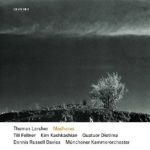 Thomas Larcher: Madhares
Thomas Larcher: Madhares
Quatuor Diotima, with Till Fellner (piano), Kim Kashashian (viola), Munich Chamber Orchestra/Russell Davies (ECM)
Born in Germany in 1963, Thomas Larcher writes music which rarely begins in the conventional sense. Vague flickers of sound creep in out of the silence, as in his string quartet Madhares, named after a mountain range in Crete. What are those strange textures at the start – strings being played with coins, producing an ethereal tinkling? Larcher likes his unusual effects: his mini piano concerto Böse Zellen ("Malign Cells") has Till Fellner’s poor piano stuffed with gaffer tape and rubber wedges. But these original sonorities don’t sound gimmicky. The sounds are fascinating, and always musical. Madhares contains some moments of melting lyricism as well as percussive aggression, the second and third movements, Honey from Anapolis and Sleepless 1 providing two fantastic examples of modern quartet writing. Still is a deeply serious two-movement concerto for viola and strings, played with authority by Kim Kashkashian. But my favourite work on this superbly produced ECM disc remains Böse Zellen: the climaxes in the third and fourth sections have an incredible bite. Find on Amazon
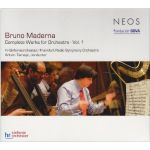 Bruno Maderna: Complete Works for Orchestra Vol. 1
Bruno Maderna: Complete Works for Orchestra Vol. 1
Frankfurt Radio Symphony Orchestra/Tamayo, with Michael Quast (speaker) and Claudia Barainsky (soprano) (Neos)
Italian composer Bruno Maderna was born in Venice in 1921 and came to prominence in the 1950s. He was a frequent visitor to the summer music school at Darmstadt in Germany, the leading centre for the post-war musical avant-garde. You might therefore approach this disc with some trepidation. Even the titles of the works make one nervous: Improvvisazionen.2 for orchestra a typical example, and Maderna was a committed advocate of Schoenbergian serialism. Yet he was also a generous, larger-than-life figure who was loved by orchestras; as well as conducting much contemporary music he gave superb performances of Mahler, Brahms, Schubert and Mozart. The pieces on this CD date from early in Maderna’s career. They are atonal, yes, but also lyrical, with a warm, Mediterranean sense of colour. The two Composizioni that introduce the disc are typical: the first stark and dramatic, with a memorable opening gesture that is soon overtaken by Brahmsian pounding timpani. It’s like a single-movement symphony, 20 minutes dense with incident. The slightly shorter second Composizione opens with a beguiling cor anglais solo over glistening string chords – a fragment of ancient Greek monody that wouldn’t have sounded out of place in a Respighi tone poem. There’s cerebral fun to be had spotting the dance references in the Improvvisazionen.1, with the collection’s toughest moments provided by the 1950 Studi per “Il Processo” di Franz Kafka for narrator and soprano (which would be more accessible had the booklet provided the text). A small gripe, as this is an excellent introduction to one of 20th century music’s more important figures. Find on Amazon
 Frank Martin: Suite from "Der Sturm"; Six Monologues from "Jederman"; Symphonie Concertante
Frank Martin: Suite from "Der Sturm"; Six Monologues from "Jederman"; Symphonie Concertante
Stavanger Symphony Orchestra/Sloane, with Thomas Oliemans (baritone) (MDG)
I raved about a new recording of Frank Martin’s oratorio Golgotha last month. There’s something deeply alluring about Martin’s musical language, mixing elements of Stravinskian neoclassicism and French impressionism with dodecaphony and teutonic gravitas. Der Sturm was compiled from music which Martin composed in the 1950s for a German production of The Tempest, with Prospero’s lines eloquently intoned by baritone Thomas Oliemans. It’s all gravely impressive, with the epilogue’s chiming bells a touching close. The Six Monologues from “Jederman”, first performed in 1943, are a terser, starker expression of Martin’s religious faith, but Oliemans sings with charisma and beauty of tone. Martin’s masterpiece is the Petite Symphonie Concertante of 1946, commissioned by the Swiss conductor Paul Sacher. Scored for piano, harp and harpsichord with double string orchestra, it’s a gem of a work, worthy of comparison with pieces such as Bartok’s Music for Strings, Percussion and Celeste. Martin feared that the unusual instrumentation would limit performance and rescored the work for a conventional large orchestra as the Symphonie Concertante. The sonorities are never as arresting as they are in the original, but for a Martin anorak like me there’s a rare pleasure in hearing the familiar motifs and sinuous chromatic lines in beefy new guises. Find on Amazon
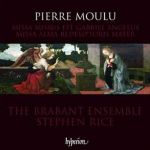 Moulu: Missa Missus est Gabriel Angelus; Missa Alma Redemporis Mater
Moulu: Missa Missus est Gabriel Angelus; Missa Alma Redemporis Mater
The Brabant Ensemble/Rice (Hyperion)
Little is known about the life of French composer Pierre Moulu (1484? - c.1550) save that he was probably cleric to the diocese of Meaux, north-east of Paris, for a brief period in the early 16th century. The works on this CD are glorious acapella polyphonic choral music; the individual vocal lines soar and intertwine, the music’s formal organisation governed by remarkably strict mathematical constraints. Musical rests are sometimes marked to be observed at the discretion of the performer ("If you want to have a short Mass, Sing without rests, breathing deeply"). Techniques like this would have caused problems for early editors and performers of Moulu, who tended to go for the easy option and sing the music "straight", and without the pauses. Writing like this runs the risk of making the results sound dry and academic, when in fact there’s a feeling of joyous spontaneity about everything on this disc; revel in the bare intervals at the start of the Mater floreat which become a glowing major chord as the inner parts enter. Or the exquisite solemnity of the shorter In Pace. We are also treated to a brief Josquin motet which Moulu used as the model for his own Missa Missus est Gabriel Angelas. All sung with astonishing confidence and beauty of tone by Stephen Rice’s Brabant Ensemble. Find on Amazon
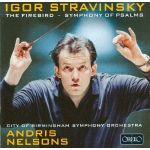 Stravinsky: The Firebird; Symphony Of Psalms
Stravinsky: The Firebird; Symphony Of Psalms
City of Birmingham Symphony Orchestra and Chorus/Nelsons (Orfeo)
How The Firebird's opening is can give an indication of what's to follow. In this exceptional reading, the spooky bass line for once sounds properly melodic. But no amount of attention to detail in this glorious, lush piece counts for anything if the music doesn’t move forward - it is a ballet score, not just an orchestral showpiece. Here it does flow nicely: you get to savour tiny flashes of harp and muted horn, but remaining aware of the bigger picture, something which Andris Nelsons’s CBSO predecessor Simon Rattle wasn’t always able to manage in his recordings. Here, the approach can be so light and effortless. Sample the playing in The Princesses’ Game with the Golden Apples. The loud tuttis work just as well; a terrifying Infernal Dance gives way to a brazen, jubilant close. All excellent, but then Orfeo generously give us as a coupling the 1930 Symphony of Psalms. This extraordinary, austere work can seem like a cold slap in the face after The Firebird’s excesses but it soon begins to weave its magic. The CBSO Chorus are forwardly balanced and sing with superb control and intonation. Nelsons brings out the joy in the Laudate Dominium, showing Stravinsky’s influence on Bernstein and Poulenc, and the serene coda is blissful. Find on Amazon
 Vivaldi: Gods, Emperors & Angels; Concertos for Recorder, Violin and Bassoon
Vivaldi: Gods, Emperors & Angels; Concertos for Recorder, Violin and Bassoon
La Serenissima/Chandler (Avie)
After indulging in a little too much heady Wagner and Ysaÿe (see below), listening to this compilation of nine Vivaldi concertos and sonatas induced sensations of blessed relief. There’s never a hint of routine in the execution; it’s all stylishly pointed and the solo playing had me grinning. Only one work exceeds the 10-minute mark, and it’s remarkable how much musical event is packed into these jewel-like works. It’s unfair to single out any soloist’s contribution, but Peter Whelan’s baroque bassoon playing has a woody, plangent tone and Pamela Thorby’s phrasing and shading are a thing of wonder, even as she’s hitting the heights on a tiny sopranino recorder. A bracing and enjoyable listen, especially if you’ve never got beyond The Four Seasons and need to broaden your baroque horizons. Find on Amazon
 Wagner: Parsifal, an Orchestral Quest (arranged by Henk de Vlieger)
Wagner: Parsifal, an Orchestral Quest (arranged by Henk de Vlieger)
Royal Scottish National Orchestra/Järvi (Chandos)
Distilling five hours of dense Wagner opera into 45 minutes sounds on paper a bit gimmicky, something designed for those who say that they like opera until they all start singing. Dutch composer Henk de Vlieger compiled Parsifal, an Orchestral Quest in 1993, and the resulting five-movement instrumental work is amazingly effective. That prelude is one of the most forward-looking sections of the work, with its unharmonised melody crossing over the barlines – you can’t tell where the downbeat comes. It’s such an ethereal opening that the quickening of tempo in the cunningly constructed second movement comes as a real surprise - Parsifal’s reckless impetuosity cleverly suggested. The tolling bells in the two Knights of the Grail passages have real presence, and the closing postlude is as beguiling a musical sunset as you’ll ever encounter. It can never be a substitute for the real thing, but it kept me enthralled. Couplings are the ebullient third-act prelude to Lohengrin together with the overture and ballet music from Tannhäuser. Another opulent Chandos production, Neeme Järvi and the RSNO giving the tunes a cinematic heft that would be impossible to achieve in an orchestral pit. Find on Amazon
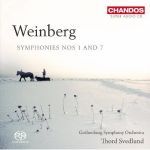 Mieczysław Weinberg: Symphony No 1; Symphony No 7
Mieczysław Weinberg: Symphony No 1; Symphony No 7
Gothenburg Symphony Orchestra/Svedlund (Chandos)
Is it an obscure ballet by Prokofiev? No, it’s surely a chunk of one of Shostakovich’s wartime symphonies? No, it’s Mieczysław Weinberg’s 1942 First Symphony, dedicated to the Soviet army. Weinberg, born in Poland in 1919, fled his homeland when the Germans invaded and by a circuitous route ended up in Moscow. He became a Soviet citizen and remained active until his death in 1996. There has been a renewal of interest in his music, and Opera North will be performing his 1980s opera The Portrait next season. Is Weinberg worth reviving? On the evidence of this release, yes. The first symphony is very obviously Shostakovich-influenced; and while it’s easy to spot the older composer’s tics and fingerprints, you can feel Weinberg slowly evolving his own style, more lyrical but lacking Shostakovich’s immaculate grasp of structure; with a spot of judicious pruning this could be a really impressive work. The coupling is the shorter Seventh Symphony from 1964. More immediately striking than the earlier symphony, it’s scored for harpsichord and strings, and written for Rudolf Barshai’s Moscow Chamber Orchestra. There’s a subdued beauty in the high string lines, and the harpsichord adds a touch of ice to the textures. Neither of these works sounds easy to play, but these performances by the Gothernburg Symphony Orchestra under Thord Svedlund are excellent. Find on Amazon
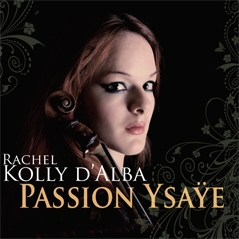 Ysaÿe: Passion Ysaÿe - Six Sonatas for Solo Violin
Ysaÿe: Passion Ysaÿe - Six Sonatas for Solo Violin
Rachel Kolly d’Alba (Warner Classis and Jazz)
A violinist acquaintance got really excited when I asked him about the Ysaÿe sonatas. “Absolutely brilliant, but almost totally impossible to play!” was his comment, before rushing off to lend me his copy of the sheet music. Eugène Ysaÿe (1858-1931) was a Belgian violin virtuoso and composer; these six solo sonatas were conceived as a response to Bach’s solo violin music and were dedicated to six younger players. As with Elgar’s Enigma Variations, the pieces aim to depict the personalities of the dedicatees. Only by following the sonatas with a score does your jaw drop when you have proof that there only one person playing – listen out for fearsome leaps and juicy chords containing as many as six notes. But unlike many virtuoso display pieces, these studies work as real music. There are plenty of fireworks, but Ysaÿe can also provide delicious moments of repose, as with the gentle Malinconia section in the second sonata, a dazzling work beginning with Bach quotations mingling with the Dies Irae. The fifth sonata begins with a magical depiction of dawn, with church bells evoked by left-handed pizzicato notes. Rachel Kolly d’Alba plays these pieces brilliantly; there’s a lot of red-blooded swagger and energy, and the close balance heightens the physical impact. All great... But my heart always sinks when I see the packaging and sleeve art for an issue like this; photos of Ms Kolly d’Alba wearing slinky dresses posing in attractive locations. If she’s that good, why resort to what Joe Muggs writing on theartsdesk recently called "classical babe" tactics? Part of me wishes that this CD had been recorded by a fat, bald, middle-aged bloke. I know I’m carping, but does classical music really need this treatment? Hmmph. Find on Amazon
REISSUE of the MONTH
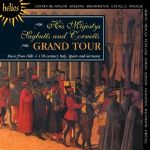 His Majesty’s Sagbutts and Cornetts: Grand Tour - Music from 16th and 17th century Italy, Spain and Germany (Hyperion)
His Majesty’s Sagbutts and Cornetts: Grand Tour - Music from 16th and 17th century Italy, Spain and Germany (Hyperion)
The sackbut is more obviously a narrow-bore precursor of the trombone; the cornett a hybrid woodwind instrument played with a trumpet mouthpiece. The sound is nowhere near as piercing as that of a modern trumpet, but there’s a remarkably agility to be heard when it’s played well – sample Biagio Marini’s Sinfonia Grave. The 22 short pieces on this generously filled reissue are from the 16th and 17th centuries, and from a range of mostly obscure Italian, Spanish and German composers. The highlights are many: the solemn four-part sackbutt-writing in Francisco de Peńalosa’s O Domina sanctissima is a model of idiomatic brass writing, or the florid cornett-writing and thunderous pedal notes in the Galliarda La Battaglia and Canzona super Cantionem Gallicam by (the unfortunately named) Samuel Scheidt. At times I would have appreciated a touch more beery vulgarity and coarseness, but it seems mean to nitpick when the playing is this good. Find on Amazon
Share this article
more Classical music
 First Person: Leeds Lieder Festival director and pianist Joseph Middleton on a beloved organisation back from the brink
Arts Council funding restored after the blow of 2023, new paths are being forged
First Person: Leeds Lieder Festival director and pianist Joseph Middleton on a beloved organisation back from the brink
Arts Council funding restored after the blow of 2023, new paths are being forged
 Classical CDs: Nymphs, magots and buckgoats
Epic symphonies, popular music from 17th century London and an engrossing tribute to a great Spanish pianist
Classical CDs: Nymphs, magots and buckgoats
Epic symphonies, popular music from 17th century London and an engrossing tribute to a great Spanish pianist
 Sheku Kanneh-Mason, Philharmonia Chorus, RPO, Petrenko, RFH review - poetic cello, blazing chorus
Atmospheric Elgar and Weinberg, but Rachmaninov's 'The Bells' takes the palm
Sheku Kanneh-Mason, Philharmonia Chorus, RPO, Petrenko, RFH review - poetic cello, blazing chorus
Atmospheric Elgar and Weinberg, but Rachmaninov's 'The Bells' takes the palm
 Daphnis et Chloé, Tenebrae, LSO, Pappano, Barbican review - lighting up Ravel’s ‘choreographic symphony’
All details outstanding in the lavish canvas of a giant masterpiece
Daphnis et Chloé, Tenebrae, LSO, Pappano, Barbican review - lighting up Ravel’s ‘choreographic symphony’
All details outstanding in the lavish canvas of a giant masterpiece
 Goldscheider, Spence, Britten Sinfonia, Milton Court review - heroic evening songs and a jolly horn ramble
Direct, cheerful new concerto by Huw Watkins, but the programme didn’t quite cohere
Goldscheider, Spence, Britten Sinfonia, Milton Court review - heroic evening songs and a jolly horn ramble
Direct, cheerful new concerto by Huw Watkins, but the programme didn’t quite cohere
 Marwood, Power, Watkins, Hallé, Adès, Bridgewater Hall, Manchester review - sonic adventure and luxuriance
Premiere of a mesmeric piece from composer Oliver Leith
Marwood, Power, Watkins, Hallé, Adès, Bridgewater Hall, Manchester review - sonic adventure and luxuriance
Premiere of a mesmeric piece from composer Oliver Leith
 Elmore String Quartet, Kings Place review - impressive playing from an emerging group
A new work holds its own alongside acknowledged masterpieces
Elmore String Quartet, Kings Place review - impressive playing from an emerging group
A new work holds its own alongside acknowledged masterpieces
 Gilliver, LSO, Roth, Barbican review - the future is bright
Vivid engagement in fresh works by young British composers, and an orchestra on form
Gilliver, LSO, Roth, Barbican review - the future is bright
Vivid engagement in fresh works by young British composers, and an orchestra on form
 Josefowicz, LPO, Järvi, RFH review - friendly monsters
Mighty but accessible Bruckner from a peerless interpreter
Josefowicz, LPO, Järvi, RFH review - friendly monsters
Mighty but accessible Bruckner from a peerless interpreter
 Cargill, Kantos Chamber Choir, Manchester Camerata, Menezes, Stoller Hall, Manchester review - imagination and star quality
Choral-orchestral collaboration is set for great things
Cargill, Kantos Chamber Choir, Manchester Camerata, Menezes, Stoller Hall, Manchester review - imagination and star quality
Choral-orchestral collaboration is set for great things
 St Matthew Passion, Academy of Ancient Music, Cummings, Barbican review - moving and humble
A small-forces performance of intimacy and directness
St Matthew Passion, Academy of Ancient Music, Cummings, Barbican review - moving and humble
A small-forces performance of intimacy and directness
 Classical CDs: Fog, overdubs and broken glass
An Easter oratorio, plus late-romantic song transcriptions and an iconic ballet score
Classical CDs: Fog, overdubs and broken glass
An Easter oratorio, plus late-romantic song transcriptions and an iconic ballet score

Add comment